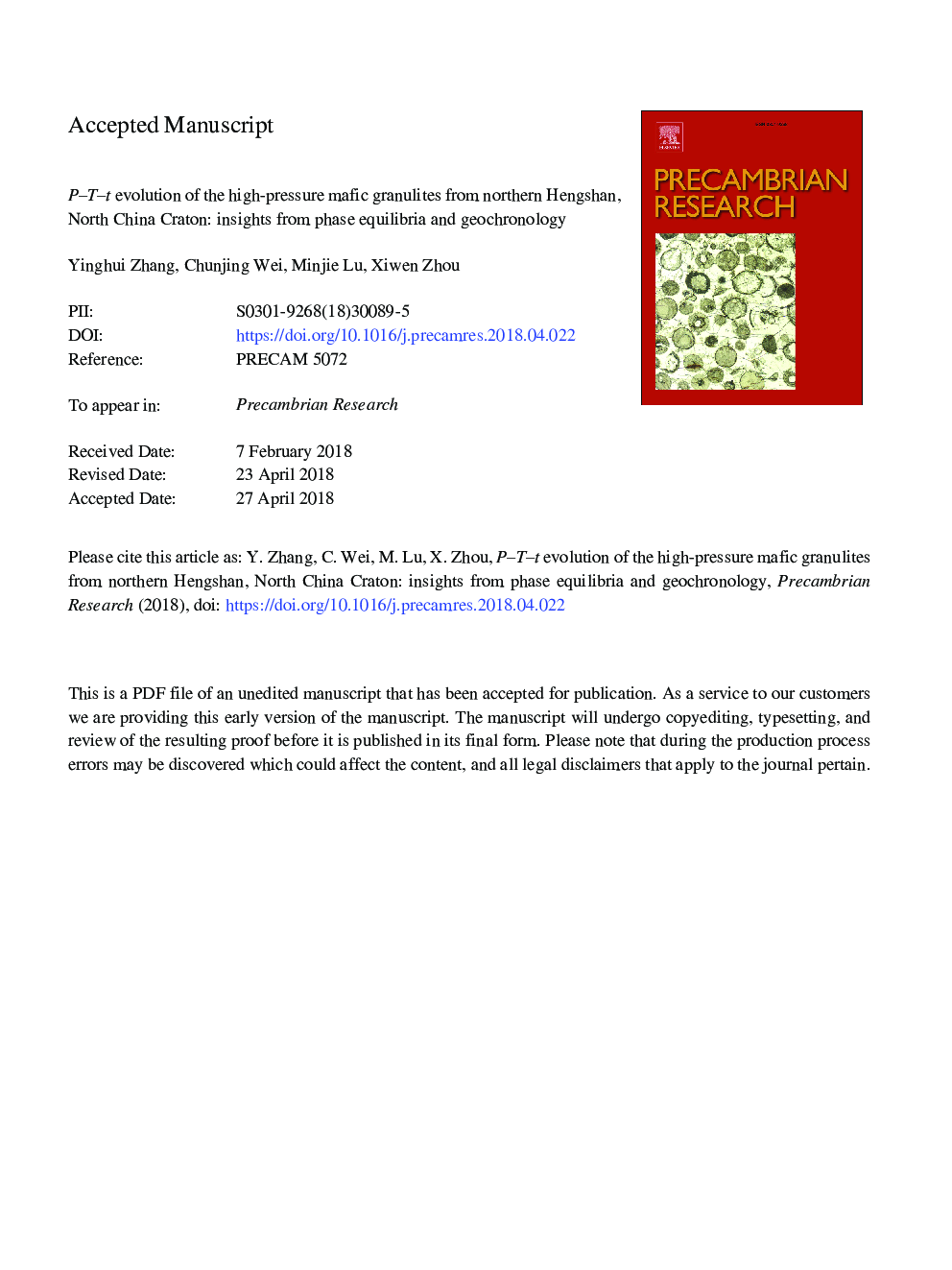| Article ID | Journal | Published Year | Pages | File Type |
|---|---|---|---|---|
| 8912537 | Precambrian Research | 2018 | 57 Pages |
Abstract
The Hengshan complex has drawn attention for the occurrence of typical high-pressure mafic granulites, representing the Paleoproterozoic collisional orogeny in the North China Craton. Mafic granulites occur as boudins of various scales in tonalite-trondhjemite-granodiorite (TTG) gneisses. They are composed of garnet, clinopyroxene, plagioclase, orthopyroxene, hornblende, biotite, quartz, rutile and ilmenite. Garnet porphyroblasts are usually surrounded by plagioclase coronas, and early jadeite-rich clinopyroxene is totally decomposed to the symplectite of clinopyroxene and plagioclase. Two high-pressure granulites and one two-pyroxene granulite were studied by the pseudosection approach, and clockwise P-T paths with four metamorphic stages were recognized. The pre-peak prograde stage was identified from garnet core to mantle compositions, with increasing P-T from 630 to 710â¯Â°C at 11-13â¯kbar. The peak pressure stage hasn't been well preserved but its mineral assemblages inferred from petrography to be garnetâ¯+â¯jadeite-rich clinopyroxeneâ¯+â¯quartzâ¯+â¯rutileâ¯Â±â¯plagioclase, with P-T condition of 760-820â¯Â°C at â¼15â¯kbar. The post-peak decompression with slight heating is characterized by symplectite, plagioclase coronas, and the formation of orthopyroxene. Locally, two-pyroxene granulite assemblages develop, defining P-T condition of 6-8â¯kbar and 840-860â¯Â°C for the temperature peak (Tmax). The post-Tmax cooling is represented by the occurrence of amphibolite facies assemblages especially in boudin margins with P-T condition of 6-8â¯kbar and 720-760â¯Â°C, suggesting an isobaric cooling process with fluid infiltration. U-Pb dating of metamorphic zircons record ages mainly ranging from 1897 to 1830â¯Ma with weighted mean ages of 1862â¯Â±â¯11â¯Ma for the high-pressure granulite and 1837â¯Â±â¯7â¯Ma for the two-pyroxene granulite. These metamorphic ages were interpreted to record the post-peak cooling stage especially the time close to solidus, which is also supported by the result of Ti-in-zircon thermometer. A summary of P-T-t evolution for metamorphic terrains corresponding to different crust levels in Hengshan-Wutai area indicates that the main episode of crust thickening-dominated collisional orogeny is â¼1.95â¯Ga or earlier and finished at â¼1.92â¯Ga. This was followed by post-orogenic cooling-uplifting or the overprinting of another thermal-tectonic event during the period of 1.92-1.80â¯Ga.
Related Topics
Physical Sciences and Engineering
Earth and Planetary Sciences
Geochemistry and Petrology
Authors
Yinghui Zhang, Chunjing Wei, Minjie Lu, Xiwen Zhou,
